
10 minute read
Tracking Squirrel Monkeys in the Amazon
EVERY SUMMER, CAL LUTHERAN BIOLOGY STUDENTS JOIN BIOLOGY PROFESSOR ANITA STONE DEEP IN THE JUNGLE AT THE STONE PRIMATE BEHAVIORAL ECOLOGY LAB, WHICH SHE FOUNDED IN 2000.
Professor Stone’s lab studies squirrel monkeys using naturalistic observations to test hypotheses on their social behaviors, mating strategies and life history patterns. She runs the only study site where this particular species is being monitored. Each summer, Cal Lutheran biology students awarded Swenson Summer Research Fellowships travel to the Amazon to help with her research. Students take on a three semester commitment in order to plan their study, collect and analyze data, and present the results to the scientific community. Once in the Amazon, they endure heat, humidity, mosquitoes, hiking—and no Internet access for eight weeks!
Advertisement
Summer 2019 Research
We’ll be examining the monkeys’ gut microbiota, and for that we need… you guessed it, monkey poop! Collecting fecal samples is no easy feat because each monkey weighs less than two pounds, is very active and is running around in sometimes dense canopy vegetation. Finding their feces on the forest floor will be a challenge!
PROFESSOR ANITA STONE
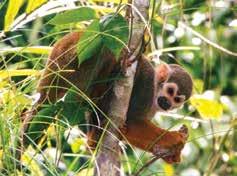
New Field House
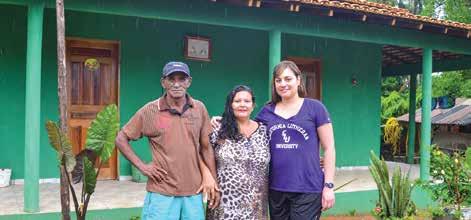
For 16 summers, Professor Stone (right) had been hosted by her field assistant Ed Viana de Silva (left), his wife Nilda de Sales (middle), and their family near the village of Ananim in Eastern Amazonian Brazil. When she began to bring student researchers to her lab in 2017, she realized there was a need for a dedicated space. So, Cal Lutheran built a house on the Viana de Silva family property for Professor Stone and her students.
Seta Aghababian, Junior Summer Student Researcher Research Focus: Behavioral differences of male and female squirrel monkey juveniles at play.
Seta hypothesizes that juvenile play practices should differ as young males prepare to vigorously compete for females during breeding season. She’ll look at whether males play more than females, who each sex’s play partner is, and how behavior changes as each sex ages.
Since my goal is to become an ecological field researcher, this is the perfect opportunity for me to gain experience in my field. I get to run a project in my area of study and in an environment that tests all my intellectual and professional abilities.
Summer 2018 Research
Nathan Delacth, Junior Summer Student Researcher
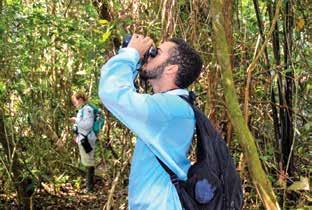
Research Focus: The function of urine washing in squirrel monkeys.
Urine washing is a common behavior among squirrel monkeys; they urinate onto the palm of their hands and rub it onto their feet. Nathan tested four functional hypotheses for its occurrence, collecting behavioral data on two groups of squirrel monkeys—adults and juveniles. Preliminary results mostly support urine washing as a mechanism of anxiety displacement.
This experience definitely reinforced my desire and passion to become a physician. Living in a village with limited resources broadened my perspective. I always knew I wanted to work in underserved areas, but this trip strengthened my desire. This was by far the best experience of my undergraduate journey.
SPRING CLASS STUDY ABROAD FEATURED EXPERIENCES:
Alexis Ghattas, Senior Major: Exercise Science Hometown: Lancaster, CA
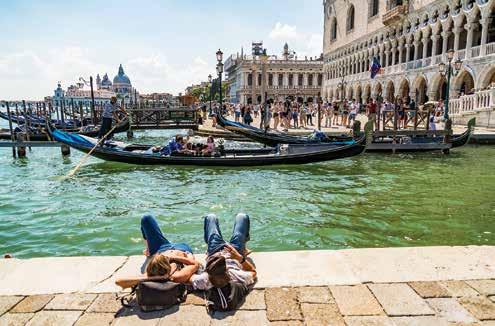
HER HIGHLIGHTS
• Seeing the Venetian churches. There were so many and each so rich in history and artistic detail that it was breathtaking. • Uffizi Museum in Florence. We learned about the art in the Uffizi, so to see it in real life felt like a dream.
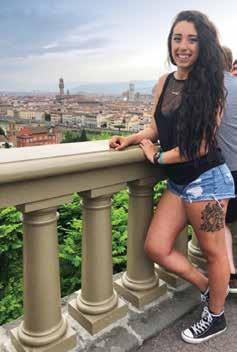
SUMMER TRAVEL SEMINAR
IMAGINING VENICE
Semester Seminar + 16 days in Venice, Verona and Florence Taught by: Professor Dru Pagliassotti (Communication) and Senior Lecturer Terry Spehar-Fahey (Art)
IN CLASS
Students investigated Venetian history, geography, demography, culture and politics, with special attention to how Venice operated as a symbol of an untouchable republic, a militant mercantile nation and a dying empire.
IN VENICE (a sampling)
• Rode a Vaporetto to San Michele, the cemetery island • Took a walking tour of Venetian Ghetto in Cannaregio • Experienced an all-day island tour of Murano (glass-making), Burano (lace-making) and Torcello (Venetian-Byzantine architecture)
My most memorable assignment in Venice was waking up at the crack of dawn to paint by the canals. The sunrise was beautiful, and it was so amazing to see a place—usually flooded with people—so serene.
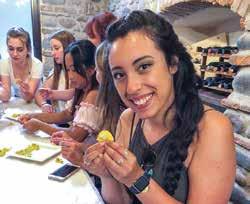
SUMMER TRAVEL SEMINAR
MAGICAL BRITAIN
Semester Seminar + 3 weeks in England, Scotland and Wales Taught by: Professor Marja Mogk (English)
IN CLASS Students explored the cultures of Great Britain from the age of Stonehenge to the age of chivalry. The class focused on the legends of King Arthur and how Britain under the Celts, Romans, Saxons and Normans influenced the evolution of the Arthurian legends.
IN GREAT BRITAIN (a sampling)
• Hadrian’s Wall and the Roman Army Museum, England • Merlin’s Mountain, Wales • Edinburgh Castle, Scotland • Stonehenge, Westminster Abbey and the British Museum
Ally Hatter, Junior Major: Math Hometown: Baton Rouge, LA
HER HIGHLIGHTS
• Edinburgh. We got to know the city and felt a bit like locals. It was the best way to begin our journey. • Hiking along Hadrian’s Wall in northern England. To know that the Roman army roamed over that vast, green landscape was mind blowing.
Looking at Great Britain through the scope of the King Arthur tales made our time in country feel magical. Avebury and Glastonbury were two of my favorite cities. This trip opened my mind to taking risks. It made me appreciate history and how big this beautiful world is.
OTHER RECENT TRAVEL SEMINARS
TREASURES OF PERU II Taught by: Professor Rafaela Fiore Urizar (Spanish) Professor Samuel Claussen (History) Students took walking tours of Lima and Cusco; visited the National Museum of Archaeology, Anthropology and History; experienced a Peruvian cooking class, a salt mine in the Sacred Valley, an Andean community where they helped harvest crops, and a Machu Picchu archaeological site.
EXPLORING JAPANESE SOCIETY & CULTURE Taught by: Professor Akiko Yasuike (Sociology) Professor Ryan Medders (Communication)
Students interacted with locals in Tokyo and Kyoto at markets, parks, museums, temples and shrines. They experienced Zen meditation, kimono wearing, a tea ceremony and a traditional village.
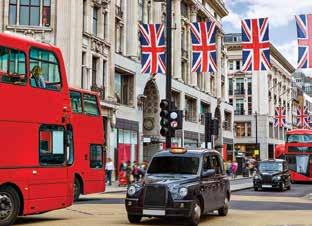
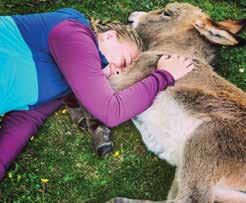
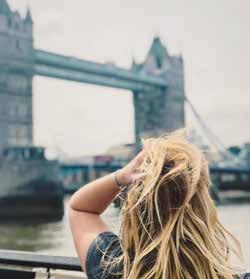
Photos This Page> FROM LEFT: 1. New Forest National Park > Ally relaxing with one of the donkeys that roam free in the Park. 2. London > Ally admiring in the London Bridge on one of her last days in the city. 3. Getting Around > The iconic taxis and double-decker buses of London.
Photos Opposite Page > FROM LEFT: 1. Lounging in Venice > A canal with floating gondolas, just off Piazza San Marco. 2. A View of Florence > Alexis enjoying a day of sightseeing. 3. Pasta Making > Alexis shows off her Italian culinary skills.
IN THE MIDDLE OF THE BLOOM
STUDENTS CAN ENJOY THE BEAUTIFUL CONEJO VALLEY SPRING BLOOM JUST STEPS AWAY FROM CAMPUS.
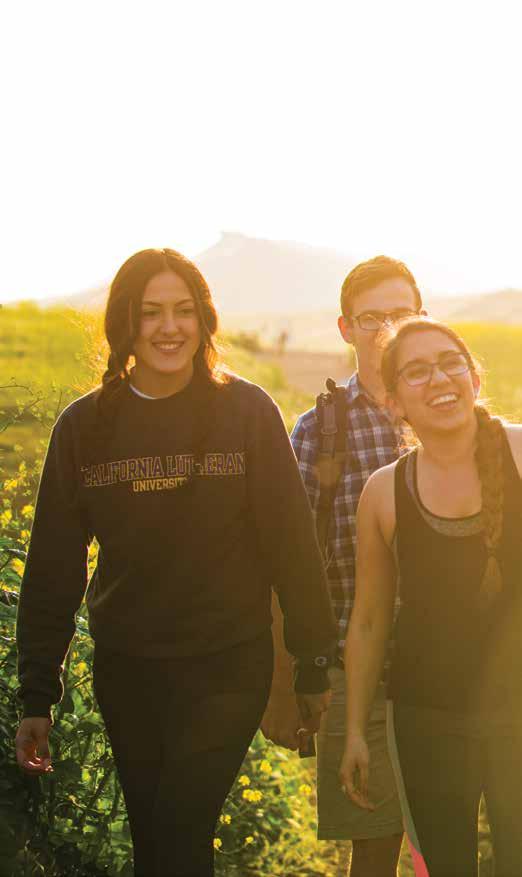
Designated open-space nature areas account for 34 percent of Thousand Oaks’ land mass.
An estimated 60,000 oak trees can be found within city limits.
Thousand Oaks offers more than 150 miles of hiking, biking and equestrian trails.
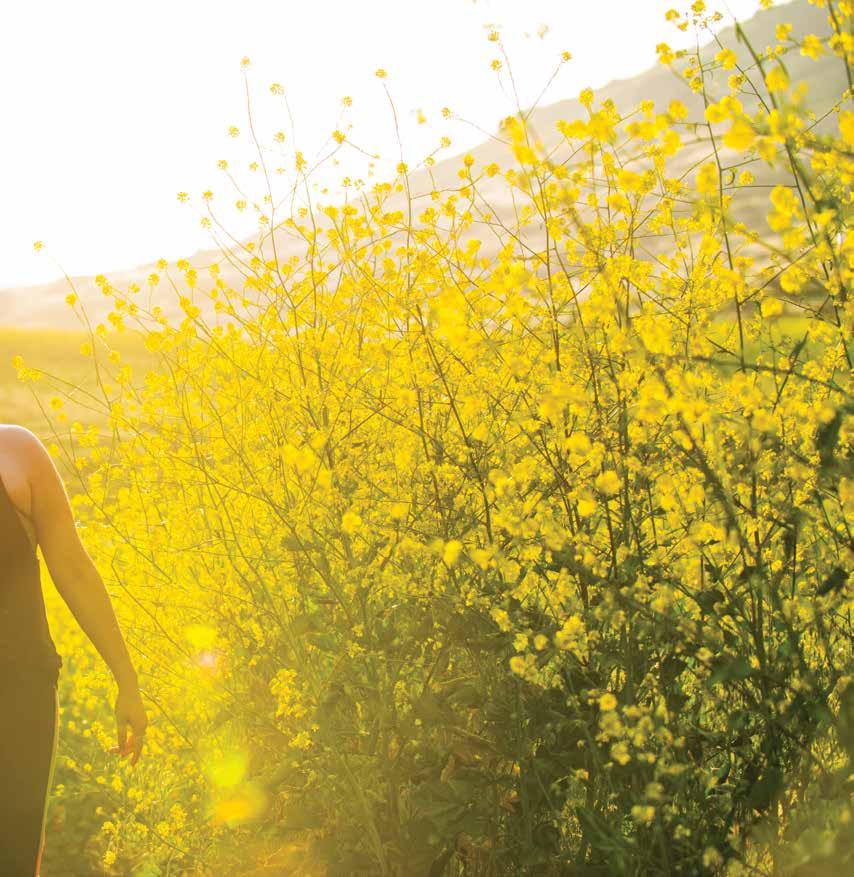
THREE RECENT GRADUATES. SOON-TO-BE DENTIST, DOCTOR AND LAWYER.
ALUMNI EXPLAIN WHAT IT TAKES TO GET INTO TOP LAW, DENTAL, AND MEDICAL SCHOOLS.
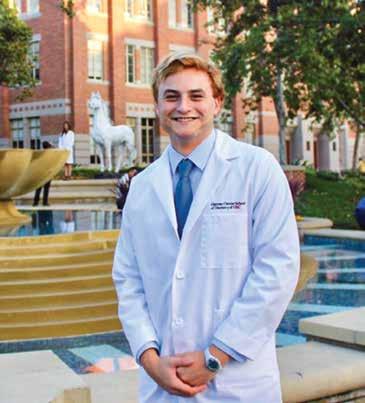
George French ’18
Major: Biochemistry and Molecular Biology Dental School: Herman Ostrow School of Dentistry, University of Southern California (USC)
How did Cal Lutheran prepare you for dental school? All of my professors wanted us to succeed. Their support for our studies extended to the athletic side of campus, where they worked with coaches to build well-rounded student-athletes. This was valuable to me as a water polo team player and a key to my success.
HOW DID CAL LUTHERAN’S OFFICE OF CAREER SERVICES HELP?
• William: Staff member helped me plan out my medical school application process. • George: My interview practice and subsequent appointments for graduate school counseling were essential in my admittance to dental school. • Jaleena: Helped me get my 4ACause internship and prepare a solid resume for law school. Steps you took to pave the way to dental school? Cal Lutheran professors encouraged us to attend office hours, which led to meaningful relationships and participation in their research. My Chemical Sciences Fellowship in the John Stauffer Research Fellows Program was a momentous step on my path to dental school. I developed critical thinking and problem-solving abilities, and having the research on my resume made me stand out as an applicant as well as providing a topic of discussion during interviews. What do you love about USC’S dental program? I’m involved in a student organization that holds free dental clinics in the greater Los Angeles area, and also sponsors international aid trips. We traveled to Panama for 12 days in April. I’ve also enjoyed learning about a subject through the experience of solving a problem found in real-life patient cases.
William Frem ’16
Major: Biology Medical School: Lincoln Memorial University-DeBusk College of Osteopathic Medicine (LMUDCOM)
Steps you took while at Cal Lutheran to pave the way to medical school? • Communication. Talking with people expanded my understanding of the path I was taking, and initiated experiences such as doing research with Dr. Chad Barber. • Doing well in classes. I knew my GPA would be heavily looked at, along with my MCAT score.
• Experience. Working in hospitals and clinics reinforced my decision to attend medical school and helped me understand the caliber of work required.
Why medical school? It fulfills three of my goals: to grow mentally, physically and spiritually; to make an impact in the health of my local community; and to serve as a leader and role model for people who need help.
What do you love about LMUDCOM’s medical program? Its academic rigor and its many opportunities to volunteer locally by doing research and treating underserved communities. How do you want to make a difference in the world? In my future practice, I’d like to treat patients and teach them health literacy. Education is important to the self-care of an individual, and it may have a domino effect on the health of the larger population.
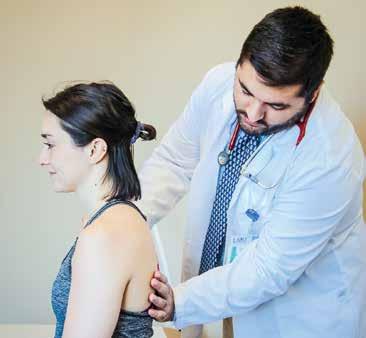
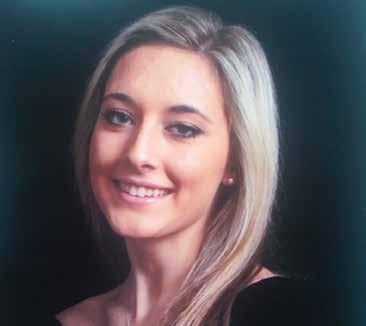
Jaleena Evans ’18
Major: Criminology & Criminal Justice Law School: Santa Clara University Law School
How did Cal Lutheran prepare you for law school? The Criminal Justice program transformed me into someone who works well with diverse groups of people, adapts to different situations, and approaches challenges with different methods of problem solving. Interning for 15 months at the Ventura County Public Defender’s Office gave me valuable insight into the real world.
Steps you took to pave the way to law school? I wanted to have the highest GPA possible, a nonprofit internship, and law firm work experience before the end of my junior year so that I’d have a strong law school application. I was able to achieve this and more.
Why law school? During my senior year of high school, my dad was arrested and processed through the criminal justice system. I sat in the courtroom for four weeks, following my dad’s case and watching other cases. Despite my personal situation, I loved being there and felt passionately that I could be an attorney. What do you love about Santa Clara’s law program? I love its intellectual challenge. I’ve learned to think complexly about concepts and to challenge the reasoning of others.



